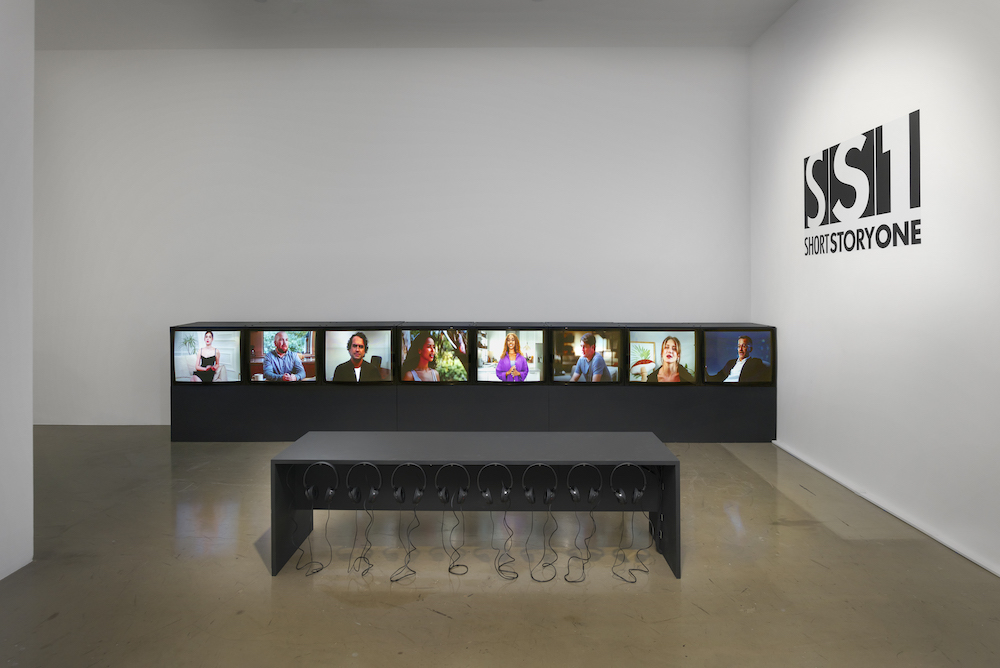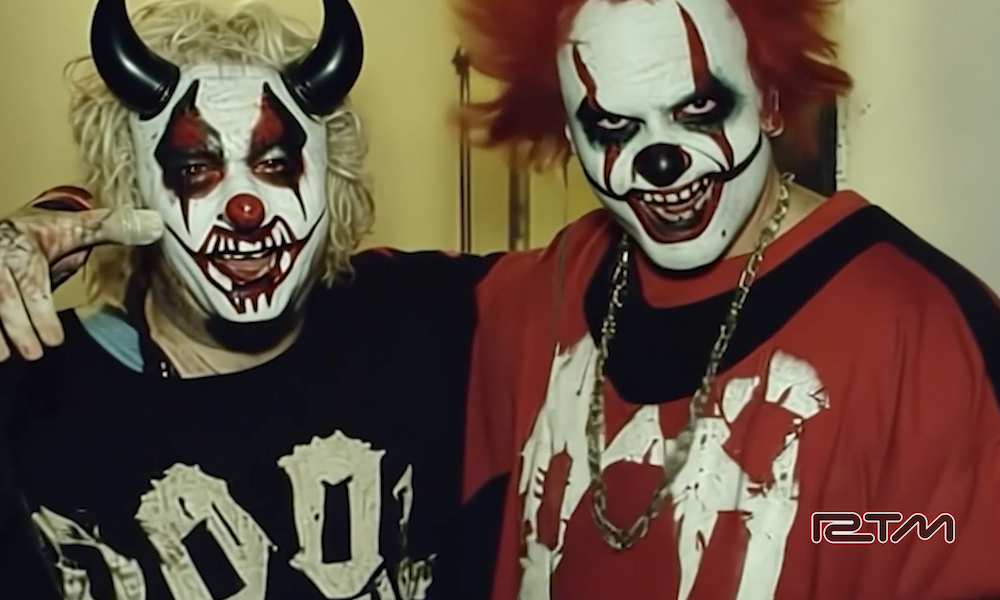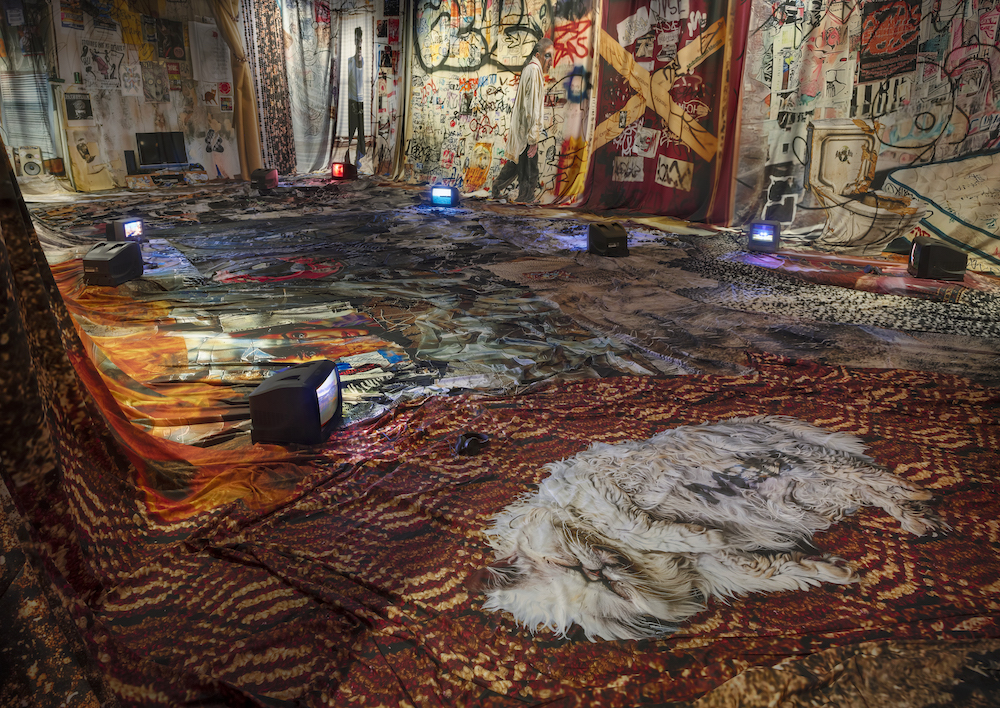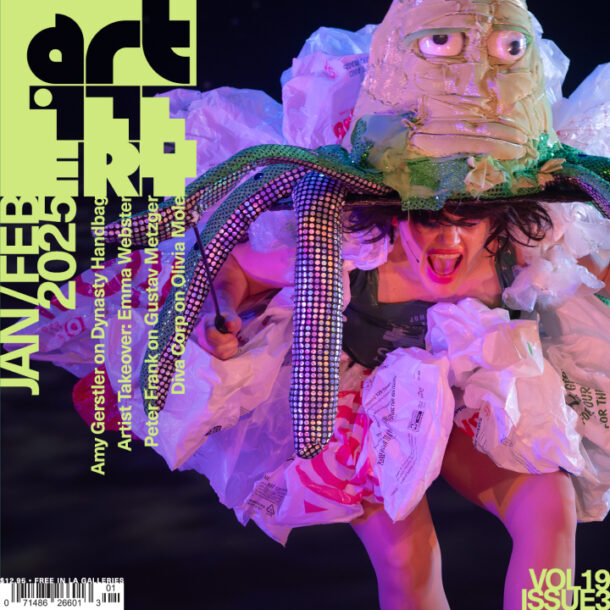Duelling Reviews
Duelling Reviews: Jon Rafman at Sprüth Magers
The precepts of psychoanalysis—that each person has an ego and a subconscious, that some explanation for who we become can be found in childhood—so thoroughly shape the way we think about contemporary life that it hardly matters if Freud got it right. Our language and stories are now irreversibly determined by the collective embrace of the discipline. Chief among Freud’s innovations, now de facto, was his idea that our dreams have meaning and can be interpreted. It’s easy to forget that before the 20th century, no one much bothered with dreams—or if they did, the impulse wasn’t to try and scry them for applicable meaning. But in the wake of 20th-century psychoanalysis, dreams became something they’d never been before: they became true.
“Proof of Concept,” Jon Rafman’s solo exhibition at Sprüth Magers, posits a dreaming world. Rafman—a prominent emissary of the 2010s “post-internet” or “New Aesthetic” movements—pries into our collective digital subconscious with a series of video works that take place in the backrooms of the internet, multiplayer video games, cable television sludge, and AI-twisted TikTok algorithms: familiar surfaces made foreign. This terrain is well-trodden by Rafman; the Canadian artist has remained prolific since his debut in the early aughts, releasing an uninterrupted stream of videos, essays, photography, and music projects, not to mention rap and fashion collaborations. His most famous early work involved archiving found images from Google Street View; other projects include feature-length films animated in 3D software and ironic interventions into the game Second Life. He’s survived personal problems (following Me Too-related allegations in 2019, Rafman lost a few museum shows and representation by one of his galleries) and the usual death knell of hot young New Media artists: the loss of relevance as soon as one’s New Media isn’t new anymore.

Jon Rafman, Main Stream Media Network, 2025 (still). © Jon Rafman. Courtesy of the artist and Sprüth Magers.
Rafman is still cool, I think. He remains so because his work isn’t about DALL-E or Grand Theft Auto or SoundCloud rap—these are just the available materials that allow him to follow the path laid out by artists from Théodore Géricault to Caspar David Friedrich to Werner Herzog (contemporaries include Harmony Korine and Ryan Trecartin). What Rafman is seeking, traipsing through our online dreamlives, are moments of wonder and fear that supersede rationality—otherwise known as the Sublime.
I’m as trapped by Freud as anyone else. So, immersed in the hours of Rafman’s video art one recent weekday afternoon at Sprüth Magers, I thought I might try my hand at dream interpretation. If contemporary life consists of long periods of boredom punctuated by moments of sheer terror, I’d come to Sprüth Magers in a period of boredom but was lured in by images of terror: a series of larger-than-life, AI-generated figures vinyled onto the gallery’s dark rectangular windows. The figures appeared drawn from a Getty Images stock photography shoot set in a post-apocalyptic hellscape. Inside the gallery, similar figures featured in a nightmarish spread of printed curtains enclosing the exhibition, covering windows, floors, and furniture. They loomed in front of graffitied teenage bedroom walls interspersed with Hikikomori hoarder objects, such as a box of Tic Tacs filled with toenails. I scribbled the words “School Shooter Sublime” in my notebook before settling in front of a monumental screen broadcasting selections of Rafman’s oeuvre via an MTV-esque channel called “MSM” (Main Stream Media Network).
The broadcast flickered between excerpts from a new 3D animation, Minor Daemon; the music videos of an AI-generated teenage emo songstress Rafman named Cloudy Heart; a series of staged interviews with more AI-generated characters reciting nonsensical blends of Reddit confessionals (this series is called Short Story 1, or SS1); and videos Rafman calls his Catastrophonics, melded viral clips of cars filling with water, seabirds invading cruise ships, and fire swallowing neighborhood streets. I found it all weirdly calming. Rafman’s work is kind to 2025 attention spans, so I could lean back and let it wash over me. I could even text a little and check socials. More of the Catastrophonics played on small boxy monitors spread throughout the room, and I took my time watching images of deer invading subway platforms fold into family dogs wielding knives and children running through moonlit cornfields.

Jon Rafman, Short Story 1, 2025 (installation view). © Jon Rafman. Photo: Robert Wedemeyer. Courtesy of the artist and Sprüth Magers.
Without the distinctive vertiginous transitions, I might not have guessed these videos were combined or generated by artificial intelligence, and I want to resist making this review about AI, since I don’t think it is the point of Rafman’s work. I’ll just say that the nature of our current LLMs—stuck somewhere between the weirdness of the early models and the promised horizon of AGI—is a boring remix of our most clichéd and pornographic human material. When the AI models were worse, they were also more poetic, and Catastrophonics feels a bit nostalgic for the poetry of pre-ChatGPT AI, when we could ask the chatbot to tell us what love meant, and it might offer back mystically botched poetry. But Rafman uses the current idiom to great effect with Short Story 1, a series of narrators who invert TED Talk and YouTuber style into high strangeness.
Perhaps because AI is controversial, especially in creative circles, the Sprüth Magers show literature claims that Rafman’s show doesn’t take a moralizing stance toward AI itself, but that seems not quite in good faith. “Proof of Concept” hardly offers a neutral vision of our technologized future, which, in Rafman’s handling, might be beautiful but is almost certainly bad.
This lingering sense of badness—of a world where an excess of beauty is matched by an excess of pain—is what makes Rafman’s work not only a show about dreaming but about truth. “Proof of Concept” is an entry in the artist’s continued attempt to both catalog dreams and understand what they might mean to a waking life—one where we pull away from a doomscroll of shadows and look for the end of the short story.
Jon Rafman’s “Proof of Concept” is yet another of this season’s shows in which the most provocative statement is buried in the press release: “Rafman offers no moral take on AI…” which is a bit like saying Olive Garden takes no position on breadsticks. But, fuck, let’s pretend for a second that it’s true: “I’m telling you this might be bad, I have no argument it’s good and so anyway I’m doing it at great expense and hoping to profit from it” is certainly the kind of idea you might have expected to be spat out in 2025—and so is “Proof of Concept”: it’s a contemporary art show with lots of AI things: next to each other. If you didn’t have that on your bingo card, you weren’t paying any attention and you’re probably much happier than me.
More tediously than his lack of a moral take, Rafman seems to have no aesthetic take on AI. The show is aggressively non-hierarchical, refusing to take pride in any one image over any other (which would be risky, as Rafman didn’t personally create any of it). You pull back a (literal) curtain and find yourself in a warren of cloth printed with AI images centered around a screen that plays an endless loop. A shirtless man and a silver trash bag seem to merge and hybridize in a sinister animated sequence that suggests Harmony Korine attempting to imitate Francis Bacon. The channel changes and it goes nowhere. Leave the room and there’s a bank of several video pieces playing separately with separate headphones. Why are all these videos in a galley, and why aren’t we just watching the good stuff at home or on a theater screen? Because the whole thing is thin, and Rafman feels that the sheen of contemporary art concerns will inconveniently thicken it.
This multifold presentation is not a feature but a bug—especially for someone trying to pull off Koons-style asshole-artist Insouciance. It reads like insecurity: Rafman cannot posit himself as the most interesting Blade Runner-influenced post-videogame artist so he posits himself as dozens of mediocre Blade Runner-influenced post-videogame artists and uses the postmodern ironies inherent in the way the work is made to paper over the lack of any otherwise engaging depth. The meta-knowledge, brought from outside the frame, that this was done by ripping off tens of thousands of other artists is the new part, not the actual images (which could’ve been made decades ago, just more slowly). Rafman has, for example, imagined a band called Pledged Torment. The concept is frat-boy black metal. Anyone else would’ve left it at that—a throwaway joke in a music mag or a one-liner in a Neal Stephenson novel—but we’ve got photos, we’ve got videos, we’ve got music, we’ve got someone asking you to look at them as art but not too closely because it’s really a joke, folks, and it’s placed right beside the Yugoslav Citizen’s Choir. As memes or minute-long YouTube moments, these are cute, but as something competing with anything else you might see in an art gallery, they’re pretension incarnate.
Rafman uses AI the way many artists use assistants or grant money: to claim more space than he knows what to do with. The amount of effort the man puts into making no effort is staggering. Rafman’s best work reads like a mood board for someone better—a game developer or film director who might shape and juxtapose these images to their own benefit or impose a narrative forcing them into something more than the sum of their parts. Or a Mad Magazine writer who could edit jokes down to only the good part. As it is: here’s a guy dressed as Pikachu, here are some Juggalos, here’s a darkly whimsical cyborg. And here’s you, the viewer, asleep.

Jon Rafman, Main Stream Media Network, 2025 (still). © Jon Rafman. Courtesy of the artist and Sprüth Magers.
Rafman belongs to that class of artist who want to provoke by asking if he’s provoking you. Any answer is proof of the thesis: if you hate it, then you’ve been provoked and mission accomplished; if you love it, great and please buy something; if you’re like “meh” then it proves this flood of “freaky” imagery has been so normalized that it must truly represent the zeitgeist.
The terrible news for Rafman is that it gets a three out of a five star rating: It’s actually sort of ok sometimes and then for reasons most at odds with what the artist seems to want. Specifically, in the Short Story 1 (2025) videos that take the text from anonymous short stories by anonymous Redditor shortstory1 and render them as monologues spoken in drab corporate interiors by “actors who have given permission to use their likeness for AI ‘deepfake’ manipulation.” How much the actors actually spoke any of this dialogue is unclear, but the overall effect is a jarring contrast between the characters’ affectless, unreflective presentation of the narratives and their actual content. What power the videos have derives largely from the fact that the stories are actually good—shortstory1’s pieces are a conversational and pop-surrealized cousin of David Foster Wallace’s Brief Interviews With Hideous Men, where, for example, a woman is only able to tell her children she loves them when they are in the mouth of “a beast,” or a window-smashing vandal discovers that the window-cracks he creates form maps to yet other windows to be smash. While Rafman’s AI sheen adds a little bass, shortstory1 is clearly (if perhaps unwillingly) carrying the project on vocals, lead, and drums.

Jon Rafman, Main Stream Media Network, 2025 (installation view). © Jon Rafman. Photo: Robert Wedemeyer. Courtesy of the artist and Sprüth Magers.
Shortstory1’s writing has a virtue of all good writing that “Proof of Concept” as a whole disdains: information is revealed in an order, chosen with intention, and the order deepens and complicates our experience of interacting with the worlds thus created. Rafman, left to his own devices here, wants the entire alphabet experienced at once, seemingly just to prove he knows the letters.
Even outside the gallery, Rafman’s work has had a vulnerability—Dream Journal 2016-2019 is an hour-and-a-half cavalcade of plot points that does everything possible to live up to its title. For example, a polar bear attacks a boy who is just a white head and dark legs on a tiny island, until a snail gets stuck in its mouth. It is all rendered with the standard-uncanniness level of off-the-shelf 3D assets. Rafman’s darkly surreal meandering narratives aren’t the problem; the problem is—unlike work by more accomplished practitioners of this mode (like the magnificent Chronopolis by Polish avant-garde animator Piotr Kamler or Mad God)—Rafman has no craft, and doesn’t seem to want any. So, a viewer whose attention can’t be held solely by yet another incongruity can’t rest their eye on anything worth a second viewing.
And why should he want craft? Rafman is no mere avant-garde animator; he’s an artist, and this means his work can be shown in galleries to people who will only watch snippets of hours-long content, have no burning desire to see the rest, and will give him credit for simply gesturing at the toolbox.

